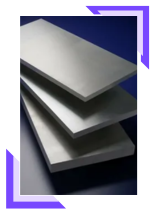Notifications

6 minutes, 19 seconds
-79 Views 0 Comments 0 Likes 0 Reviews

Aluminium alloy sheets are a cornerstone of modern manufacturing and construction. With their incredible strength-to-weight ratio, corrosion resistance, and versatility, they play a critical role in industries ranging from aerospace to automotive and construction to packaging.
In this guide, we’ll walk you through what aluminium alloy sheets are, the different types, their properties, common uses, and key benefits. Whether you’re a manufacturer, engineer, or just someone curious about industrial materials, you’ll find this information useful.
Aluminium alloy sheets are flat-rolled metal sheets made primarily from aluminium combined with other elements like copper, magnesium, silicon, zinc, or manganese. These elements enhance the base metal's physical and mechanical properties, making the alloys suitable for a wide range of demanding applications.
Unlike pure aluminium, which is soft and not suitable for structural applications, aluminium alloys provide increased strength, durability, and performance characteristics.
There are two main categories of aluminium alloys used in sheet form: wrought alloys and cast alloys. Most aluminium sheets are made from wrought alloys due to their better mechanical properties and workability.
Composed of 99% or more aluminium.
Excellent corrosion resistance.
Great for electrical and chemical applications.
Example: 1050, 1060, 1100.
High strength.
Less corrosion resistant.
Common in aerospace applications.
Example: 2024.
Good corrosion resistance.
Ideal for roofing, siding, and storage tanks.
Example: 3003.
Excellent corrosion resistance.
High strength and weldability.
Used in marine and automotive sectors.
Example: 5052, 5083.
Good strength, corrosion resistance, and machinability.
Common in structural applications.
Example: 6061, 6063.
Very high strength.
Used in aerospace and high-performance applications.
Example: 7075.
Each alloy series offers a specific set of properties tailored for unique applications. Selecting the right one depends on factors like strength, corrosion resistance, formability, and environmental exposure.
Aluminium alloy sheets offer a wide array of beneficial properties:
Lightweight: Aluminium is about one-third the weight of steel, making it perfect for applications where weight reduction is crucial.
Corrosion Resistant: Many alloys naturally resist corrosion, especially in marine or humid environments.
High Strength-to-Weight Ratio: Certain series like 7000 and 2000 offer excellent strength while remaining lightweight.
Ductility and Malleability: Easy to form into complex shapes without cracking.
Conductivity: Aluminium conducts electricity and heat efficiently, making it ideal for electrical applications.
Recyclable: It can be recycled repeatedly without loss of quality.
Thanks to their versatility, aluminium alloy sheets are used across a wide range of industries.
Aircraft components such as fuselages, wings, and internal structures use high-strength alloys like 2024 and 7075.
Aluminium sheets are used for body panels, hoods, doors, and chassis components. They reduce vehicle weight and improve fuel efficiency.
Used in facades, roofing, cladding, and structural components due to their durability and aesthetic appeal.
Aluminium sheets resist saltwater corrosion, making them ideal for boat hulls and other marine structures.
Thin sheets of aluminium (foil) are used in food and beverage packaging to keep contents fresh and protected.
Due to its conductivity and light weight, aluminium is used for cables, wiring, and heat sinks.
Let’s explore why aluminium alloy sheets are so widely used:
These sheets can withstand harsh environments, heavy loads, and high pressure, ensuring long-term performance.
Many alloy types naturally resist rust and corrosion, which reduces maintenance and extends lifespan.
Aluminium sheets are easily cut, bent, drilled, and welded into any shape or structure.
They offer an excellent balance between performance and price, especially when longevity and weight savings are considered.
With smooth finishes and various textures, aluminium sheets contribute to sleek, modern designs in architecture and consumer products.
Aluminium is 100% recyclable, and recycling it uses only 5% of the energy required to produce new aluminium. This makes it an eco-friendly option for manufacturers.
When selecting aluminium alloy sheets for your project, consider the following:
Application environment (indoor, outdoor, marine)
Required strength
Formability and machinability
Corrosion resistance needs
Weldability
Budget and availability
For example, if you're working on a boat hull, 5083 aluminium would be a better choice than 6061 due to its superior corrosion resistance in saltwater.
Aluminium alloy sheets are essential to countless industries due to their exceptional properties and wide range of uses. From aircraft and automobiles to buildings and boats, they deliver strength, flexibility, and durability in every application.

